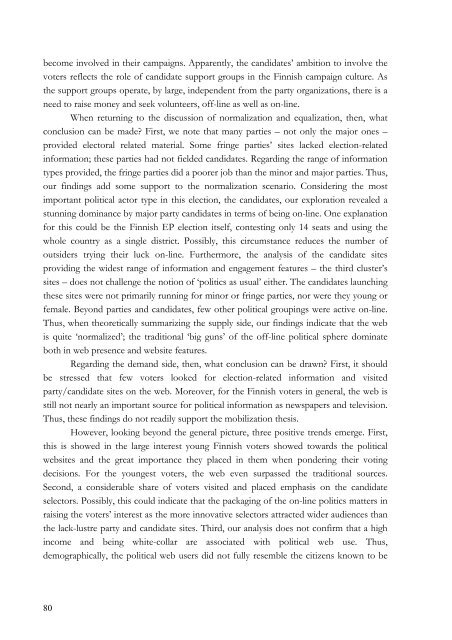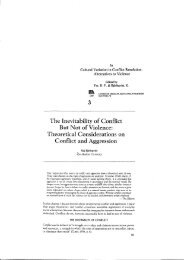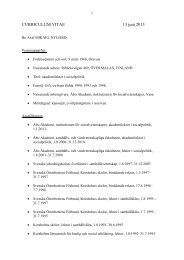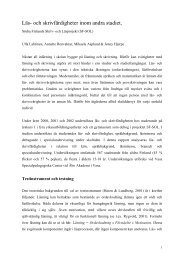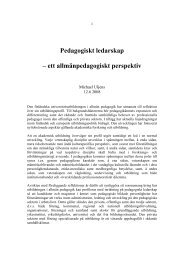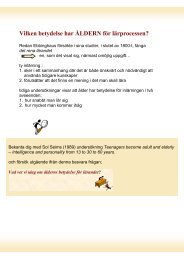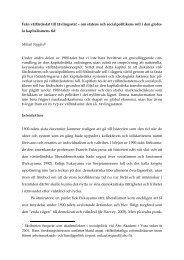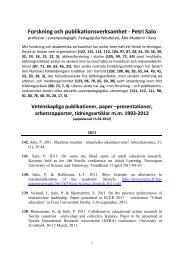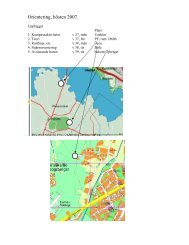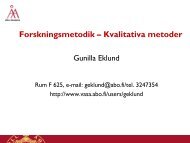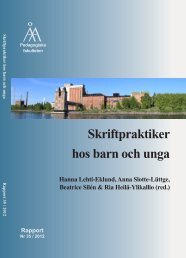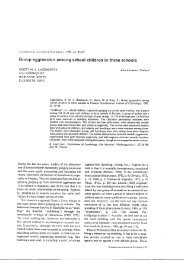Parties, Candidates and Citizens On-Line - Åbo Akademi
Parties, Candidates and Citizens On-Line - Åbo Akademi
Parties, Candidates and Citizens On-Line - Åbo Akademi
Create successful ePaper yourself
Turn your PDF publications into a flip-book with our unique Google optimized e-Paper software.
ecome involved in their campaigns. Apparently, the c<strong>and</strong>idates’ ambition to involve the<br />
voters reflects the role of c<strong>and</strong>idate support groups in the Finnish campaign culture. As<br />
the support groups operate, by large, independent from the party organizations, there is a<br />
need to raise money <strong>and</strong> seek volunteers, off-line as well as on-line.<br />
When returning to the discussion of normalization <strong>and</strong> equalization, then, what<br />
conclusion can be made? First, we note that many parties – not only the major ones –<br />
provided electoral related material. Some fringe parties’ sites lacked election-related<br />
information; these parties had not fielded c<strong>and</strong>idates. Regarding the range of information<br />
types provided, the fringe parties did a poorer job than the minor <strong>and</strong> major parties. Thus,<br />
our findings add some support to the normalization scenario. Considering the most<br />
important political actor type in this election, the c<strong>and</strong>idates, our exploration revealed a<br />
stunning dominance by major party c<strong>and</strong>idates in terms of being on-line. <strong>On</strong>e explanation<br />
for this could be the Finnish EP election itself, contesting only 14 seats <strong>and</strong> using the<br />
whole country as a single district. Possibly, this circumstance reduces the number of<br />
outsiders trying their luck on-line. Furthermore, the analysis of the c<strong>and</strong>idate sites<br />
providing the widest range of information <strong>and</strong> engagement features – the third cluster’s<br />
sites – does not challenge the notion of ‘politics as usual’ either. The c<strong>and</strong>idates launching<br />
these sites were not primarily running for minor or fringe parties, nor were they young or<br />
female. Beyond parties <strong>and</strong> c<strong>and</strong>idates, few other political groupings were active on-line.<br />
Thus, when theoretically summarizing the supply side, our findings indicate that the web<br />
is quite ‘normalized’; the traditional ‘big guns’ of the off-line political sphere dominate<br />
both in web presence <strong>and</strong> website features.<br />
Regarding the dem<strong>and</strong> side, then, what conclusion can be drawn? First, it should<br />
be stressed that few voters looked for election-related information <strong>and</strong> visited<br />
party/c<strong>and</strong>idate sites on the web. Moreover, for the Finnish voters in general, the web is<br />
still not nearly an important source for political information as newspapers <strong>and</strong> television.<br />
Thus, these findings do not readily support the mobilization thesis.<br />
However, looking beyond the general picture, three positive trends emerge. First,<br />
this is showed in the large interest young Finnish voters showed towards the political<br />
websites <strong>and</strong> the great importance they placed in them when pondering their voting<br />
decisions. For the youngest voters, the web even surpassed the traditional sources.<br />
Second, a considerable share of voters visited <strong>and</strong> placed emphasis on the c<strong>and</strong>idate<br />
selectors. Possibly, this could indicate that the packaging of the on-line politics matters in<br />
raising the voters’ interest as the more innovative selectors attracted wider audiences than<br />
the lack-lustre party <strong>and</strong> c<strong>and</strong>idate sites. Third, our analysis does not confirm that a high<br />
income <strong>and</strong> being white-collar are associated with political web use. Thus,<br />
demographically, the political web users did not fully resemble the citizens known to be<br />
80


